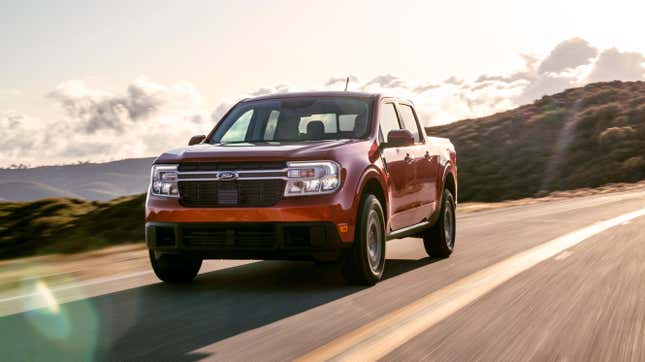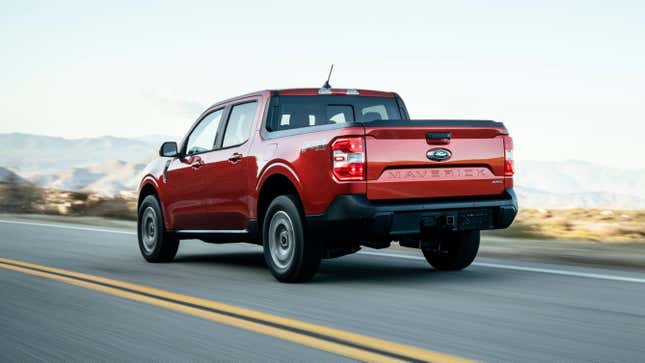Ford has stopped accepting customer orders for the Maverick because demand for the compact pickup now exceeds Ford’s production capacity. The problem is people keep ordering the Ford Maverick, and the carmaker says it refuses to take on more orders than it can build, according to the Wall Street Journal.
To be clear, this is a good problem to have, unlike the problems Ford ran into with recent model debuts. Right now, Ford is struggling to catch up on Maverick orders dating back to the truck’s release, and the carmaker told dealers those orders get first dibs. Some inventory will trickle in to dealers to “replenish stocks,” but Maverick orders are closed until mid-2022, per the WSJ:
Ford told dealers Monday that it is suspending customer orders for the Maverick pickup truck because it is already straining to fill a backlog. The company will resume taking orders for the 2023 Maverick in the summer, it said in a memo to dealers, reviewed by The Wall Street Journal.
The WSJ mentions that nationwide chip-shortages have made it hard for carmakers to sustain their usual rate of production, but that’s not exactly why Ford is struggling to fill the overwhelming amount of Maverick orders.

Rather, that has more to do with the Maverick’s price, which starts at about $20,000. Ford dealers claim the majority of Mavericks being sold are in the mid-to-high $20,000s. The Maverick’s price makes it an obviously welcome addition to Ford’s lineup. Especially as the car market keeps inching towards higher and higher average prices, as the WSJ reports:
New-car prices had been outpacing inflation for several years even before pandemic-related supply-chain disruptions sent prices sharply higher. Last year, the average price consumers paid for a new vehicle jumped 13%, to a record $40,457, according to research firm J.D. Power.
The number of cars that currently come in at an average price of $20,000 or below is down to five models. A decade ago, there were 19 of these “entry-level” models, according to research cited by the WSJ.
Of course, carmakers abandoned these entry-level models — many of which were small sedans and hatchbacks — in favor of big trucks and SUVs with generous profit margins. Ford isn’t saying what the profit margins of the little Maverick are, but it’s likely that Ford is saving money on its production, which is done in Mexico and uses parts from existing models.
What do you know, carmakers? If you make a practical (ahem, smaller) and affordable truck, people will buy so many that you’ll have to call a time-out.
